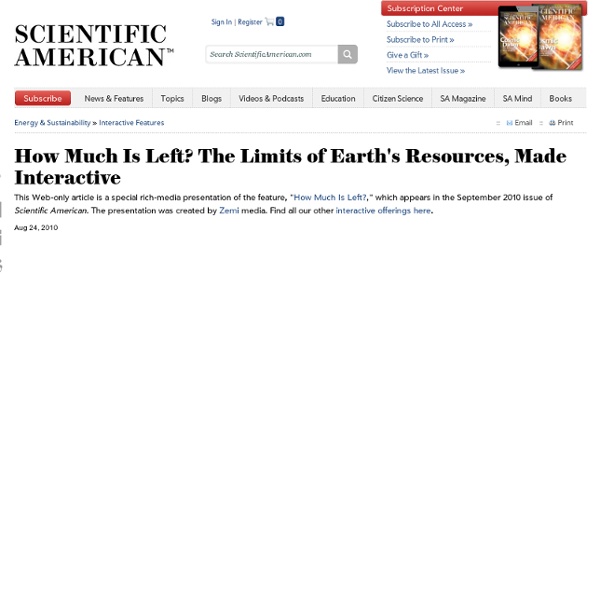



Diesel Soot Health Impacts - Diesel & Health in America - Clean Air Task Force (CATF) To view health impacts in your community, enter your ZIP Code above or click on your state on the map below. Click here for National Health Impacts. Diesel Soot Impacts Across U.S. Emissions from the 13 million diesel engines in the U.S. are associated with respiratory illness, cancer, heart attacks and premature death. Here, for the first time, Clean Air Task Force presents an interactive web site with national, state, metropolitan area and local (county) estimates of the health impacts of diesel particulate matter. Learn More about health impacts from diesel exhaust and how the analysis was done. Read CATF's report Diesel and Health in America: The Lingering Threat Take Action.
Carbon Sequestration and Storage: Developing a Transportation Infrastructure This study focuses on the pipeline infrastructure requirements for carbon capture and sequestration (CCS) in connection with compliance with mandatory greenhouse gas emissions reductions. The major conclusion of the study is that while CCS technologies are relatively well defined, there remain technological challenges in the carbon capture and sequestration phases, and less so in transportation. Carbon capture is the most significant cost in the CCS process. The study forecasts that the amount of pipeline that will be needed to transport CO2 will be between 15,000 miles and 66,000 miles by 2030, depending on how much CO2 must be sequestered and the degree to which enhanced oil recovery (EOR) is involved. The upper end of the forecast range is of the same order of magnitude as the miles of existing U.S. crude oil pipelines and products pipelines.
Climate Change Greenhouse gas (GHG) emissions management and reporting have emerged as leading environmental policy issue at the state, provincial, regional and federal levels in the United States and Canada. Several new initiatives have been launched or are currently under development in the U.S. and Canada that establish rules to report and track these emissions. In addition, the 110th Congress will begin to focus more intently on the merits and the possible form of a mandatory Federal GHG control program. The primary GHG emissions attributable to the natural gas transmission industry include Carbon Dioxide (CO2) from combustion sources and methane (CH4) from fugitive emissions (leaks) and venting. Methane emissions are especially important due to the global warming potential (GWP) of methane. GWP is the index that has been developed to compare different GHGs on a common reporting basis. The gas transmission industry CO2 emissions comprise just 0.5 percent of U.S.GHG emissions.
Standards and Practices for Bulk Storage Skip to main navigation Below is a partial listing of consensus standards and recommended practices which are applicable to the Chemical Bulk Storage (6 NYCRR Parts 595-599) and Petroleum Bulk Storage (6 NYCRR Parts 612-614) programs in New York State. Many of these consensus standards and practices are available for purchase although a few of the documents, e.g., federal government publications, may be downloaded from the Internet at no cost. Other comparable consensus codes, standards, or practices which are developed by a nationally recognized organization or independent testing laboratory, e.g., Underwriters Laboratories (UL), Petroleum Equipment Institute (PEI), Chlorine Institute (CI), Steel Tank Institute (STI), etc., which meet the standards of 6 NYCRR Parts 595-599 are also acceptable. Steel Tank/Piping Systems The following publications of the American Petroleum Institute (API) can be searched for and purchased using the offsite link on the right: Corrosion Other
Energy Emissions Data & Environmental Analysis of Energy Data Energy In Brief Articles What are greenhouse gases and how much are emitted by the United States? Greenhouse gases trap heat from the sun and warm the planet's surface. Of U.S. greenhouse gas emissions, 87% are related to energy consumption. Since 1990, greenhouse gas emissions in the United States have grown by about 1% per year. Read all Energy in Brief articles › Energy and the Environment Explained Greenhouse Gases' Effect on the Climate Levels of several important greenhouse gases have increased by about 40% since large-scale industrialization began around 150 years ago. Where Greenhouse Gases Come From In the United States, greenhouse gas emissions come primarily from the burning of fossil fuels in energy use. See more energy and the environment topics › Features Short-Term Energy Outlook Released April 8, 2014 | Next Release: May 6, 2014 EIA's monthly energy projections through 2015. Annual Energy Outlook 2014 Release Dates: April 7-30, 2014 | Next Early Release Date: December 2014